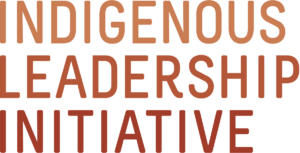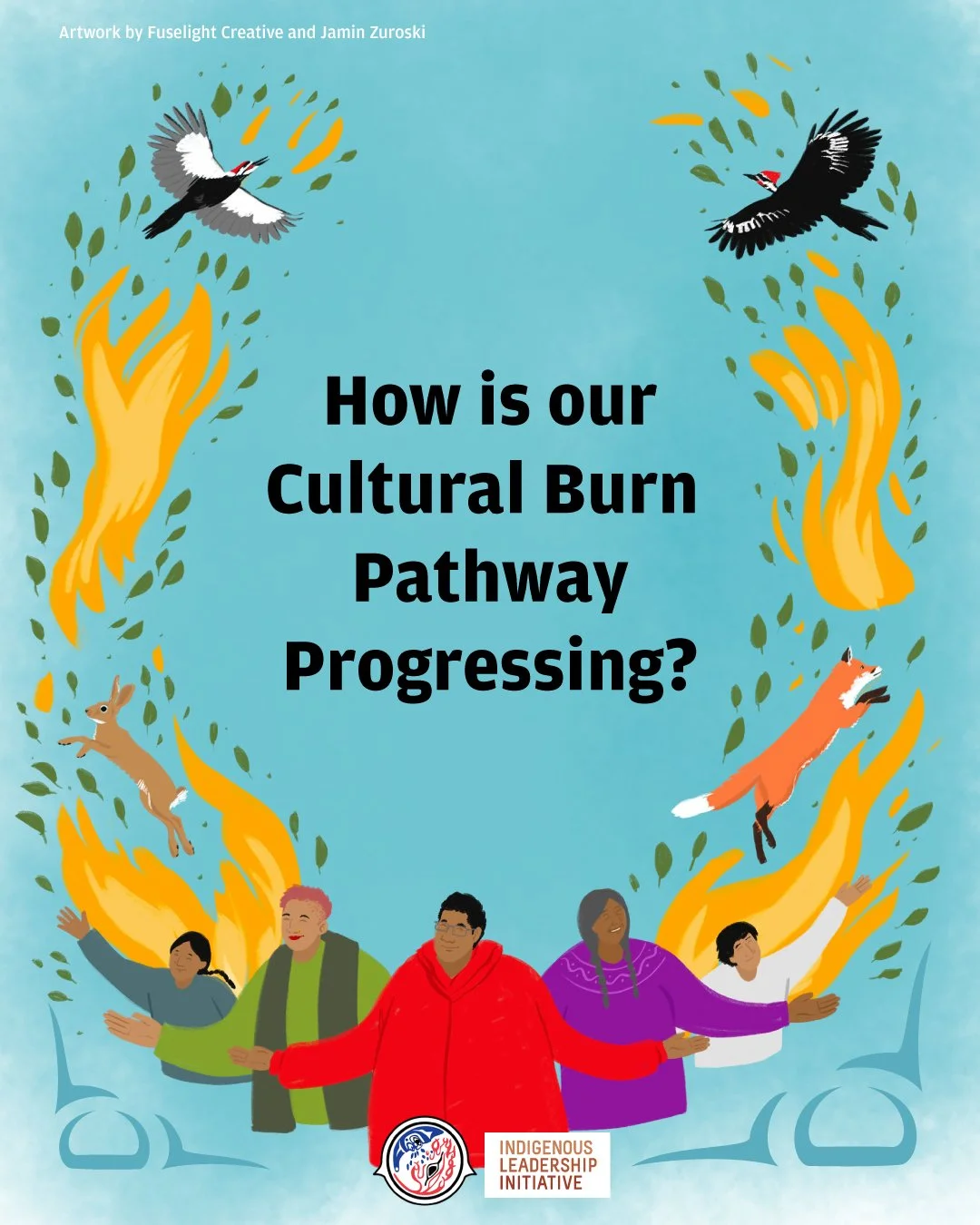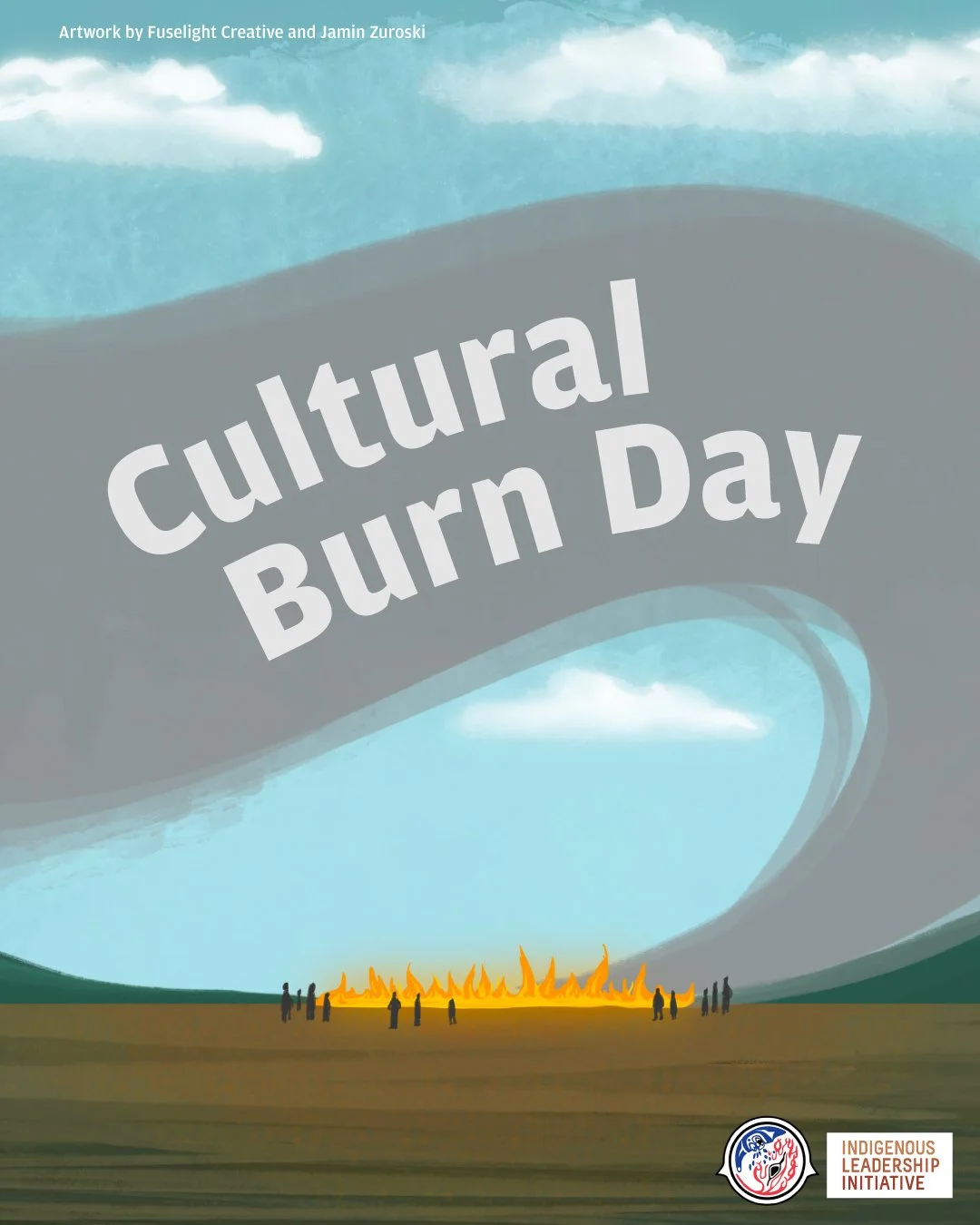FIRE: New Resource Helps Indigenous Nations Revitalize Cultural Burns and Reduce Fire Risk
August 7. 2025
By Dr. Amy Cardinal Christianson
This summer, scores of Indigenous communities from British Columbia to Quebec have evacuated in the face of high intensity wildfires. It’s become a familiar pattern. Research shows that 42 per cent of wildfire evacuations occur in Indigenous communities. The growing risk of out-of-control fire to both our homes and territories —and the pain of being evacuated for weeks on end—has contributed to a resurgence in Indigenous cultural burns.
Many Indigenous Peoples have put fire on the land to achieve cultural objectives, including increasing the abundance of berries and medicines and reducing dry grasses and diseased trees that fuel wildfire. Yet a century of the Indian Act, residential schools and colonial fire policies limited these practices.
A workbook released this week by the First Nations Emergency Services Society (FNESS) and the Indigenous Leadership Initiative (ILI) aims to help Indigenous Nations create cultural burn programs that reduce wildfire risk and revitalize a core part of our relationship with the land.
A Resurgence in Cultural Fire
At a Cultural Burning Workshop hosted by FNESS and ILI this spring, Attila Nelson a member of the Lil'wat Nation and a Cultural and Prescribed Fire Specialist with FNESS recalled, “When my dad was a child, cultural fire was banned in BC; they had to do it ad hoc.”
Nations across the country faced similar barriers to burning. But the devastating fire seasons we’ve seen in recent years prompted a shift. Many Indigenous Nations are revitalizing cultural burns not only to adapt to climate change, but also to restore knowledge and strengthen Indigenous decision making on the land.
And more fire agencies and members of the public are recognizing the value. “My goal for cultural fire,” said Attila Nelson, “is to revitalize medicine plants and bring animals back while also achieving wildfire risk reduction.” Those outcomes are good for all Canadians.
Building a Strong Cultural Fire Program
Within this growing interest in cultural fire, Indigenous Nations bring a range of current experience. Some know how to plan and conduct a burn but would like more support on how to evaluate the land after the fire. Others haven’t talked to their Elders about burns and want to know how to begin.
To meet Nations where they are, we launched a multi-year community-based research project. We wanted to ensure Indigenous people saw themselves reflected in the project, so we involved over 50 Elders and knowledge holders, hosted numerous gatherings and workshops, had extensive peer reviews, and edited the workbook multiple times to reflect all the input.
The result is a workbook containing seven worksheets that walk communities through the development of a strong cultural fire program—no matter what stage your Nation is in.
Cultural fire is culture and location-specific. So instead of a prescriptive approach, each worksheet poses a set of questions and prompts that can be answered collectively.
It explores how to begin gathering knowledge, reflecting on the fire-dependent species communities rely on, and considering the impacts of not applying fire on the land. It offers pathways for how to walk the land to plan a burn and how to succeed on burn day. And it also encourages communities to design evaluation and monitoring steps to assess the cultural benefits and the long-term changes in the burned area.
Healthier Lands, Stronger Communities
The worksheets are guiding documents. In the end, cultural fire always rests on a community’s immense knowledge of their territory.
“Traditional burning means using our protocols and procedures that we used to use to burn off an area, that was safe and contained,” said Jordan Joe of the Shackan Indian Band. “It wasn’t just light the match at the bottom of the hill and letʼer buck. It was doing it properly.”
Doing it properly reconnects us to our traditions. One of my favorite things about cultural fire is the community feeling it creates. People are outside, talking and laughing and learning, and you see smiles on people’s faces when they are handed the torch. We are taking care of the land together, and it feels good.
With the help of the “Worksheets to Create a Cultural Fire Pathway” workbook, we hope more communities share in that experience.






